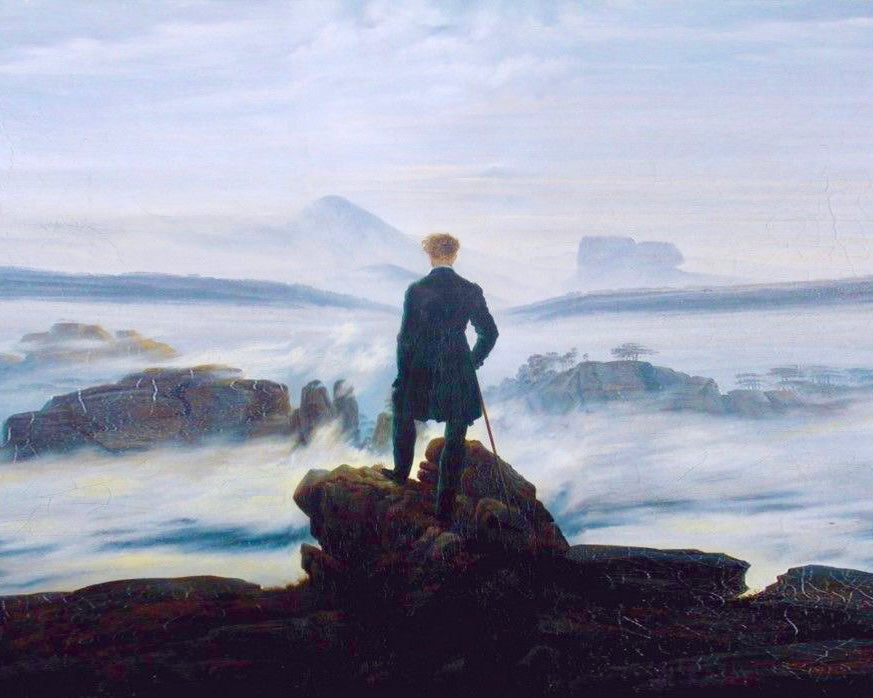The Unfortunate Loneliness of Being a Genius

Becoming a successful artist is an aspirational goal that comes with its share of challenges, sacrifices, and an unwavering commitment to one's craft. The rewards of reaching such heights are undeniably fulfilling, but the unexpected and isolating nature of success can cast a shadow on the artistic journey.
Artists often experience isolation in their creative pursuits. Fueled by a unique passion, they explore unconventional ideas, challenging artistic norms. This intense focus can make it challenging for artists to connect with those who don't share their singular passion or understand the complexities of their creative journey.
"An artist is always alone - if he is an artist. No, what the artist needs is loneliness."
The pursuit of artistic success demands a substantial investment of time, energy, and focus. As artists ascend the ladder of success, they often find themselves unintentionally distancing from their social circles. The relentless drive to achieve goals creates a sense of isolation, where personal relationships and social engagements become casualties of success. Artists frequently grapple with the weight of societal and personal expectations, attempting to balance their artistic evolution with the demands of critics and admirers. This dual challenge adds another layer to the inherent loneliness that accompanies the genius of artistic expression.

Artists like Vincent van Gogh and Jean-Michel Basquiat serve as examples of artistic brilliance entwined with profound solitude. Van Gogh's unwavering commitment to his unique vision led to isolation from the art establishment. Similarly, Basquiat faced loneliness despite his rapid rise in the vibrant world of 1980s New York City.

"Whosoever is delighted in solitude is either a wild beast or a god."
While the solitude of artistic success presents challenges, it is essential to recognize its transformative power in fostering creativity. The solitude of introspection becomes a sanctuary where creativity flourishes, akin to flowers blooming in a hidden garden.

"You can't hear your thoughts, your voice, without solitude."
Vincent van Gogh lived for 53 weeks in the asylum of Saint-Paul-de-Mausole from May 1889, after mutilating his ear. There he had little contact with everyday life and none with the art world. Life in the walled asylum, in a former monastery on the outskirts of the small town of Saint-Rémy-de-Provence, could hardly have been more of a contrast to his time in Paris. Vincent had lived in 1886-88 with his brother Theo, who ran an art gallery. Paris was then the art capital of the world and home of the avant-garde. Vincent mixed with Toulouse-Lautrec, Degas, Pissarro, Signac, and Seurat, as well as Gauguin, who would become his companion in the Yellow House in Arles.
It was in Paris that Van Gogh thrust away the dark colors of his earlier Dutch paintings and responded to the sparkling brushwork of the Impressionists. However, the asylum became a paradoxical space where Van Gogh painted many of his greatest works, under the most challenging of circumstances. In the garden and just outside the gates, he painted soaring cypress trees. Van Gogh had time on his hands, and he knew exactly what he wanted to do—to paint. He completed 150 pictures in the year, and excluding the periods when he was suffering mental crises, this represented one every two days. Without his art, he probably would never have tolerated the indignities of asylum life.

Benefits of Solitude for Artists
- Uninterrupted Focus: Isolation provides artists with the gift of uninterrupted focus, allowing them to delve into their creative processes without external distractions. This intense concentration can lead to breakthroughs in artistic expression.
- Introspective Exploration: Solitude creates a conducive environment for introspection, enabling artists to explore their inner landscapes, emotions, and thoughts. This self-awareness often translates into profound and authentic creative works.
- Freedom to Experiment: Without external pressures or influences, artists in isolation can feel free to experiment with unconventional ideas and techniques. This experimentation can result in groundbreaking innovations and unique artistic styles.
-
Connection with Inner Voice: Solitude allows artists to connect with their inner voice and intuition. This internal dialogue often serves as a guiding force, steering them toward creative choices that align with their authentic artistic vision.
While the solitude of artistic success presents both challenges and benefits, embracing the uniqueness of one's voice, finding autonomy in creativity, and recognizing the transformative power of solitude can help artists navigate this solitary path with resilience and creative brilliance. While the journey may seem lonely, it is in this very solitude that artists forge their identities and create their most exciting work.